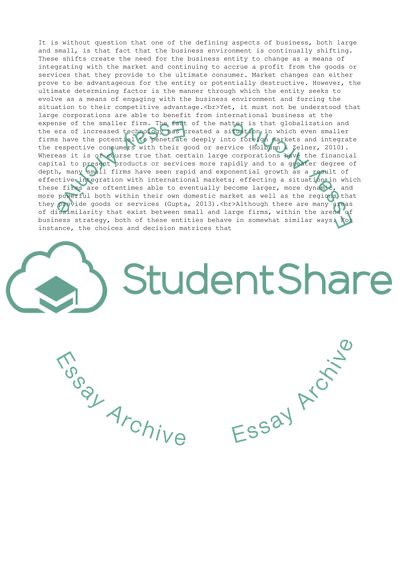Cite this document
(An analysis of the challenges facing SMEs (Small & Medium Enterprises) Research Paper, n.d.)
An analysis of the challenges facing SMEs (Small & Medium Enterprises) Research Paper. https://studentshare.org/business/1826661-an-analysis-of-the-challenges-facing-smes-small-medium-enterprises-in-the-increasingly-globalised-world-of-business
An analysis of the challenges facing SMEs (Small & Medium Enterprises) Research Paper. https://studentshare.org/business/1826661-an-analysis-of-the-challenges-facing-smes-small-medium-enterprises-in-the-increasingly-globalised-world-of-business
(An Analysis of the Challenges Facing SMEs (Small & Medium Enterprises) Research Paper)
An Analysis of the Challenges Facing SMEs (Small & Medium Enterprises) Research Paper. https://studentshare.org/business/1826661-an-analysis-of-the-challenges-facing-smes-small-medium-enterprises-in-the-increasingly-globalised-world-of-business.
An Analysis of the Challenges Facing SMEs (Small & Medium Enterprises) Research Paper. https://studentshare.org/business/1826661-an-analysis-of-the-challenges-facing-smes-small-medium-enterprises-in-the-increasingly-globalised-world-of-business.
“An Analysis of the Challenges Facing SMEs (Small & Medium Enterprises) Research Paper”. https://studentshare.org/business/1826661-an-analysis-of-the-challenges-facing-smes-small-medium-enterprises-in-the-increasingly-globalised-world-of-business.


